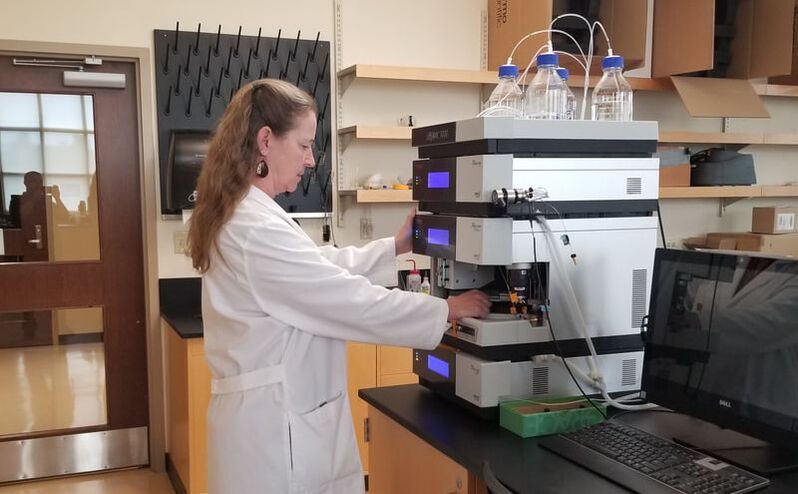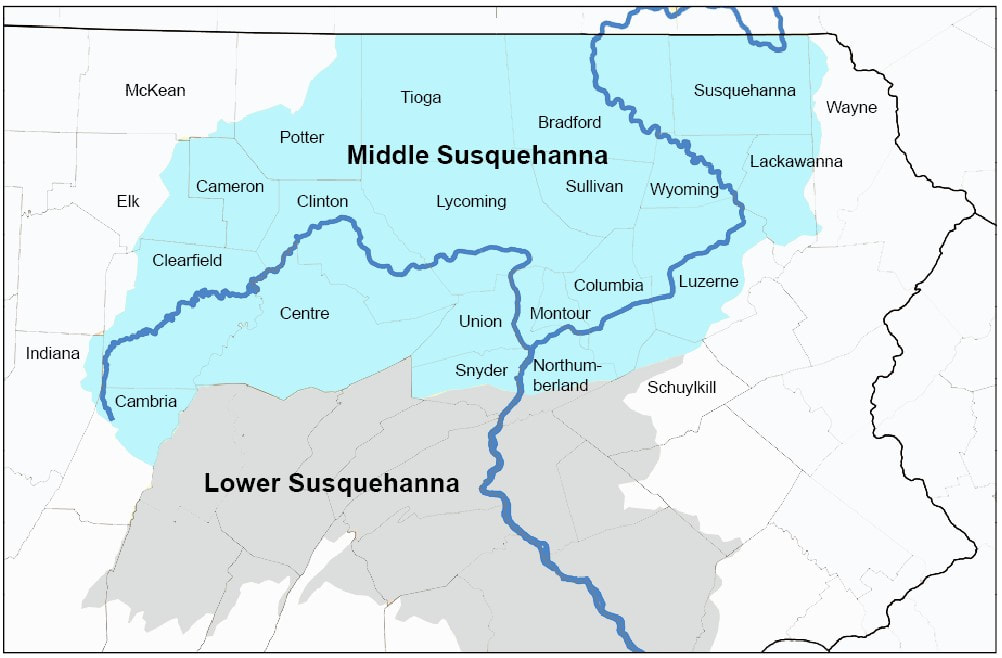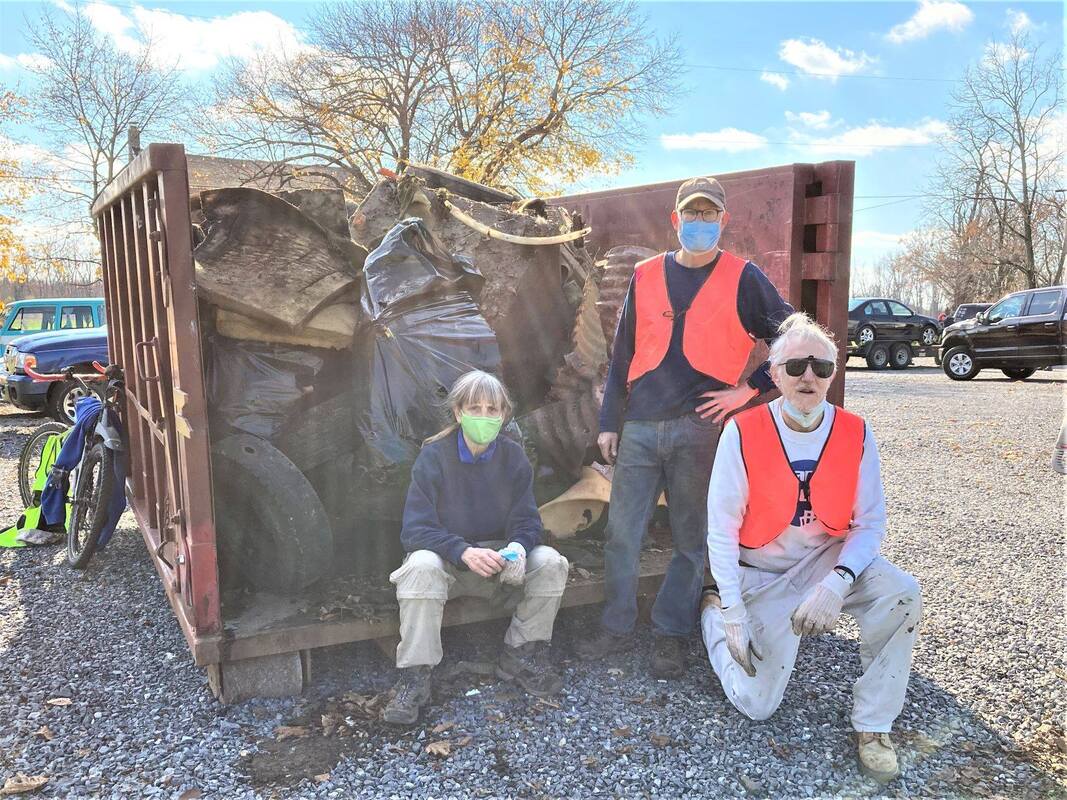PennDOT takes steps to minimize impact on active eagle nest near Thruway's southern construction4/29/2022 As bald eagles returned to a Snyder County nest along the Penns Creek earlier this spring, the Middle Susquehanna Riverkeeper Association and several local concerned citizens reached out to the Pennsylvania Department of Transportation to see what impacts this may have on construction activities for the nearby southern section of the Central Susquehanna Valley Thruway project.
“We will continue to coordinate with the PA Game Commission and the US Fish and Wildlife Service as the CSVT Project proceeds, but the first measure we are taking is that we will not perform any construction activity within 660 feet of the nest,” reported Noah Bauer, project manager of PennDOT’s Engineering District 3-0’s design unit. “This is the US Fish and Wildlife Service’s standard recommendation as a buffer to protect eagles from the visibility and noise of typical construction activities.”
0 Comments
Riverkeeper's note: The following column was written and provided by Kathy Snavely, owner of Kathy's Cuisine and president of the Middle Susquehanna Riverkeeper Association. If you have any questions about this column, you can email her directly at [email protected]
So, how many greenhouse gases (carbon compounds and methane) is your lifestyle contributing to the environment? This is not likely a question you ask yourself every day. Science tells us that in the US, we each contribute 16 tons during the course of our lifetime. You might be asking yourself how in the world you do that -- and yes, that’s the kind of stuff that is contaminating our air so much that some scientists believe we are already past the point of no return. Not only is the carbon in the air, it’s also in our water. And water treatment consumes about 13 percent of our electricity, and it’s growing. Armed with 19 years of experience in various roles with Merck Pharmaceuticals out of Riverside, Lou Ann Tom continues to conduct research into ways to reduce impacts of pharmaceuticals that wind up in our waterways via her role as Associate Professor of Chemistry at Susquehanna University.
Among the variety of medications created at Merck, “We made Ivermectin, which is fairly toxic and treating it was a high priority, so I got involved in studying low levels of pharmaceuticals that may wind up in the river,” she said. “Some of the components were very difficult to analyze because some things can be toxic at levels that could be very, very low – almost too low to measure. “Ivermectin can be an issue at parts per trillion. Most of the common analytical techniques have an ability to test to parts per million or parts per billion. I started studying ways in which we could develop a method to see that compound at parts per trillion. From there, I started looking at other compounds that were common and potentially could be toxic in really low levels.” Next-level Blue HERYN program sessions added for graduates of the introductory HERYN day programs4/15/2022 In an effort to continue momentum started via its introductory HERYN (Helping Engage our River's Youth with Nature) program, the Middle Susquehanna Riverkeeper Association is holding a specialized "Blue HERYN" sojourn open only to graduates of the the original HERYN program.
The Blue HERYN program day is scheduled for Thursday, June 30, 2022, on the Penns Creek in Union/Snyder counties with two timeslots to accommodate as many participants as possible. Just two weeks into taking the Riverkeeper position, armed with a plastic EnviroScape model of a watershed, I spoke with a number of homeschool families at a small library in the western reaches of our region.
The discussion included an overview of what makes a watershed, and I explained it was like a series of funnels that collect rainwater, runoff and springs from underground aquifers and channel them into bigger and bigger bodies of water that all flow along the path of least resistance toward the Chesapeake Bay and, ultimately, the Atlantic Ocean. As the kids quietly contemplated that concept, a parent’s raised hand led to an unexpected question: “How do those funnels get there? Are there people that bury them in the ground?” As a fun way to raise awareness about important issues facing our river and the network of tributaries that feed into it along with celebrating the 50th anniversary of the nationwide Clean Water Act, the Middle Susquehanna Riverkeeper Association is holding a "Quiz & Cuisine" trivia night and meal on Earth Day.
Scheduled to run from 6-8 p.m. on Friday, April 22, 2022, at the Montour Preserve near Washingtonville, the trivia portion will focus on questions developed from stories available on the association's blog feed, which are also in the new paperback book, "Sentinels of the Susquehanna: Volume 1," which includes more than 50 stories about a wide variety of topics related to the river and the aquatic resources that depend on it. Links to free versions of each of the stories online are below. Its headwaters in the Bald Eagle State Forest severely impaired by acid precipitation and valleys below impacted by sedimentation and nutrient runoff, the Buffalo Creek became a prime target two decades ago for efforts by the Department of Environmental Protection to create a watershed alliance of local citizens who could help clean things up.
“The DEP provided a grant through the Merrill Linn Conservancy, of which we are a subsidiary, of $5,000 in 2001 – and because of that in 2002, the Buffalo Valley Watershed Alliance was formed,” said the group’s current chairmain, David Staebler. “The first chairman was Jeff Bowers who was instrumental in getting things started and building momentum.” The alliance wasted no time in addressing issues facing the creek, including high acidity in the headwaters. Vernal warning: New signs offer a reminder to not disturb vernal pools and the aquatic life within4/1/2022 A springtime rite of passage, vernal pools are usually natural depressions that collect moisture during the spring months and become vital breeding grounds for different species of amphibians.
Unfortunately, many of these impromptu pools are found in high-traffic areas where they can be disturbed and the eggs, tadpoles and other aquatic life can be disrupted by external sources. As a way to raise awareness about specific vernal pools, the Middle Susquehanna Riverkeeper Association has created signs that can be purchased and posted near them. Mark your calendar: Riverkeeper association to hold Susquehanna Trivia Night to celebrate Earth Day4/1/2022 The Middle Susquehanna Riverkeeper Association's Quiz & Cuisine event is scheduled for Friday, April 22, 2022, with a fun trivia competition, a healthy meal and an opportunity for conversation about important topics surrounding the river. For updated details and to purchase tickets, click here.
|
AuthorsRiverkeeper John Zaktansky is an award-winning journalist and avid promoter of the outdoors who loves camping, kayaking, fishing and hunting with the family. Archives
July 2024
Topics |









 RSS Feed
RSS Feed